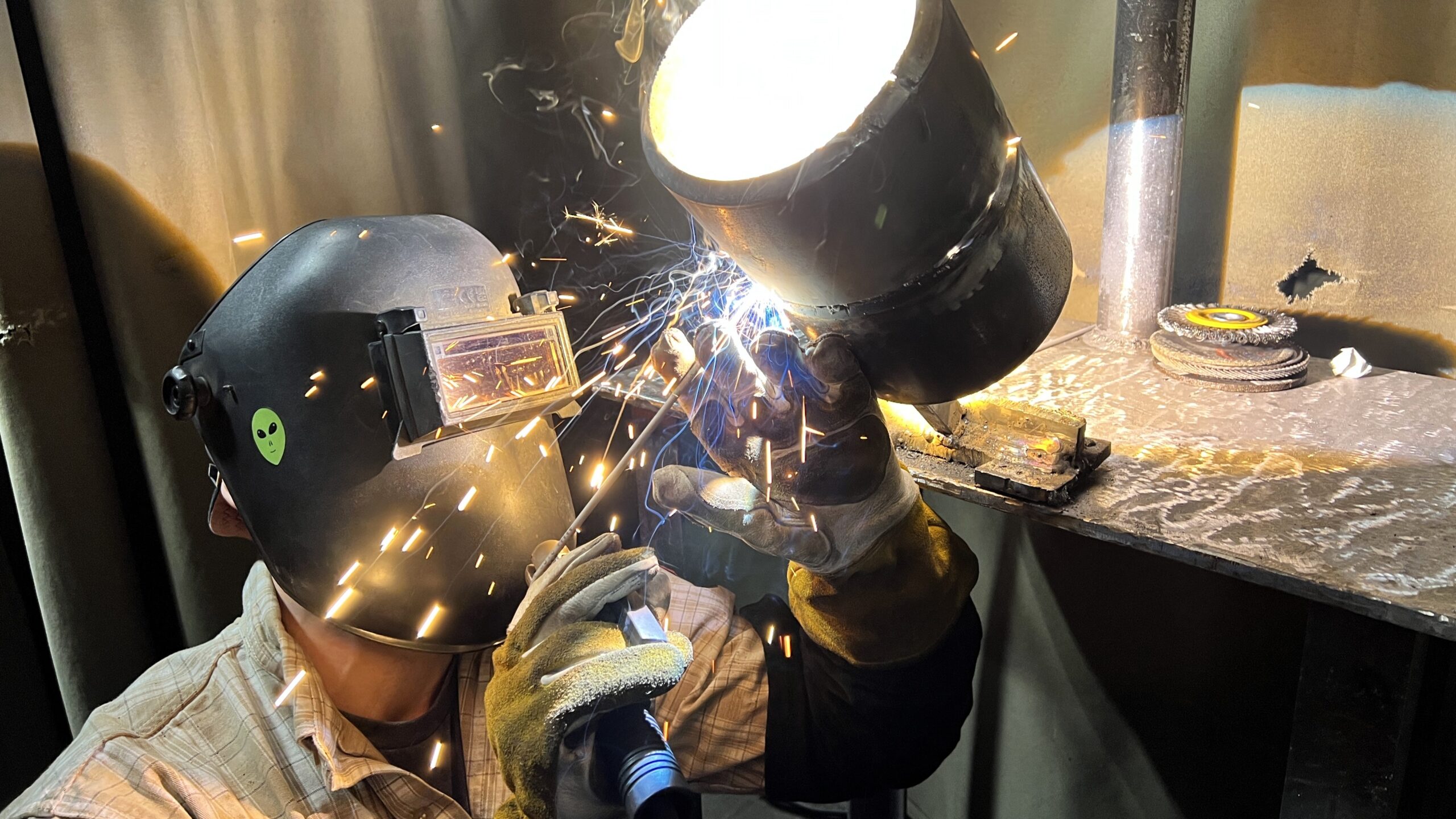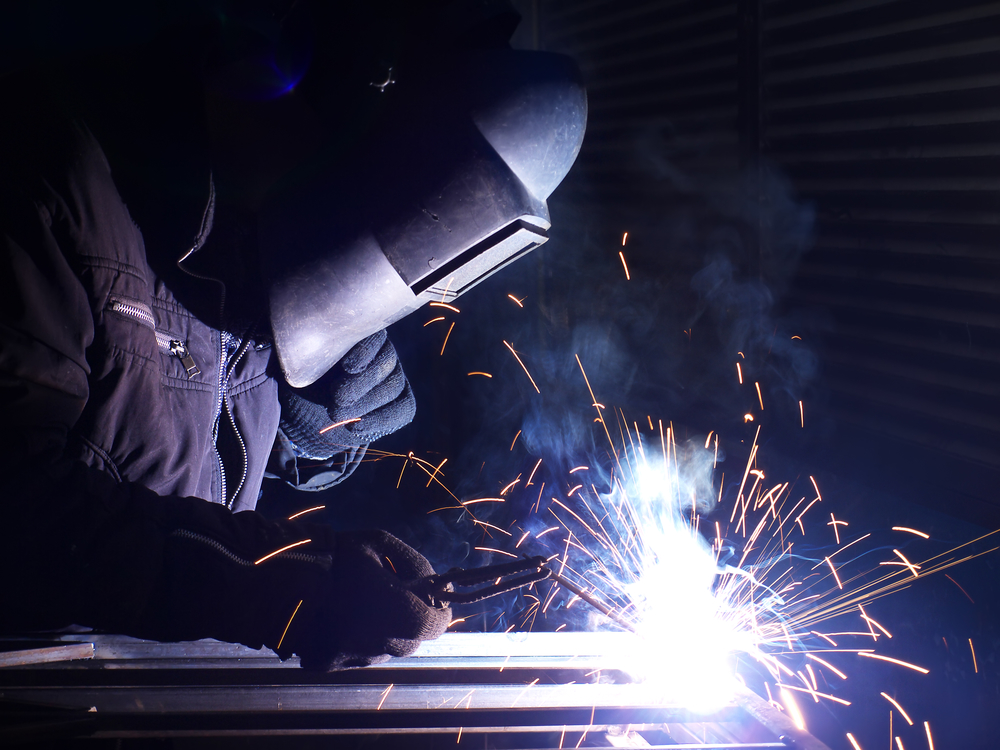Usual Welding Repair Work Issues and Exactly How to Address Them Successfully
Welding repair work usually experience a variety of concerns that can jeopardize the integrity of the final product. Usual troubles include insufficient penetration, porosity, and imbalance, to name a few. Each defect presents unique difficulties that require particular approaches for resolution. Recognizing these issues is necessary for welders aiming to improve their skills and results. This conversation will explore these typical welding repair service issues and reliable techniques to address them.
Poor Infiltration
Poor penetration takes place when the weld steel fails to fully fuse with the base product, causing weak joints and potential structural failures. This problem usually originates from not enough warm input, inaccurate electrode angle, or incorrect welding speed. Welders may encounter inadequate infiltration because of a miscalculation of the needed criteria for a particular material thickness or type. Additionally, contamination on the base product's surface area can prevent reliable bonding, intensifying the trouble. To resolve insufficient infiltration, welders need to assure proper setups on their tools and keep a clean work surface area. Routine evaluation of welds is suggested to determine any kind of shortages early, permitting for timely improvements and the avoidance of endangered architectural integrity in bonded settings up.
Porosity
Porosity is a typical issue in welded joints that materializes as tiny gas bubbles trapped within the weld metal. This problem can endanger the integrity of the weld, leading to lowered stamina and prospective failure under stress and anxiety. Belgrade Fabrication. Porosity usually develops from contamination, wetness, or incorrect welding methods, which allow gases to run away right into the liquified weld swimming pool. To resolve porosity, welders ought to ensure proper surface area preparation, maintain a clean working environment, and use appropriate welding specifications. Furthermore, selecting the best filler material and protecting gas can minimize gas entrapment. Normal assessment and testing of welds can aid determine porosity early, ensuring timely restorative actions are taken, thereby protecting the quality and reliability of the welded structure
Misalignment
Imbalance in welding can arise from various variables, including improper configuration and thermal expansion. Recognizing the root causes is crucial for reliable resolution. Several improvement techniques are offered to straighten elements and guarantee structural stability.
Reasons of Imbalance
Welding imbalance typically originates from a selection of underlying problems that can endanger structural stability. One main cause is incorrect fit-up of elements before welding, which can result in spaces and uneven surface areas. Variations in thermal growth during the welding process can likewise lead to distortion, especially if the materials being signed up with have various coefficients of development. Furthermore, insufficient clamping and fixturing may fall short to hold components safely in position, leading to movement during welding. Improperly conserved devices, including welding machines and tools, might present disparities in the weld bead, additional adding to imbalance. Operator error, stemming from insufficient training or experience, can additionally play a considerable duty in creating misaligned welds.

Correction Methods Available
Addressing misalignment effectively requires a combination of corrective techniques tailored to the certain concerns available. One common method is the use of components or jigs to hold elements in the correct position throughout welding, making certain consistent alignment. Furthermore, preheating the materials can help in reducing distortion and enhance fit-up. For considerable misalignment, mechanical adjustment techniques, such as using hydraulic jacks or clamps, can be utilized to correct the position before welding. Post-weld heat treatment may likewise be necessary to relieve stress and anxieties triggered by imbalance. Cautious evaluation and adjustment throughout the configuration stage can prevent imbalance problems from ending up being significant problems, advertising a smoother welding process and enhancing total structural honesty.
Distortion
Distortion is a common challenge in welding that can arise from different elements, including unequal cooling and heating. Recognizing the reasons for distortion is crucial for executing efficient avoidance methods. Addressing this problem not only enhances architectural integrity however also improves the general quality of the weld.
Reasons for Distortion
When subjected to the intense warmth of welding, materials typically undergo modifications that can cause distortion. This sensation primarily arises from thermal development and contraction during the welding process. As the weld area warms up, the product expands; upon cooling, it acquires, which can produce inner stresses. Additionally, uneven heating across a workpiece can exacerbate these stresses, resulting in warping or flexing. The type of material additionally plays a considerable function; metals with differing thermal conductivity and coefficients of expansion might react in different ways, bring about unpredictable distortions. Furthermore, poor joint style and inadequate fixturing can add to imbalance throughout welding, enhancing the probability of distortion. Recognizing these reasons is vital for efficient welding fixing and avoidance approaches.
Prevention Techniques
Reliable avoidance techniques for distortion during welding concentrate on regulating heat input and guaranteeing proper joint style. Preserving a consistent heat input helps to lessen thermal growth and tightening, next which can lead to distortion. Making use of techniques such as preheating the workpiece can also lower the temperature gradient, promoting uniform heating. Furthermore, selecting ideal joint designs, such as T-joints or lap joints, can boost security and lower stress and anxiety focus. Carrying out appropriate fixturing to secure the work surfaces in location additionally help in maintaining placement throughout the welding process. Ultimately, staggered welding sequences can disperse warmth extra equally, protecting against localized distortion. By using these strategies, welders can greatly lower the probability of distortion and enhance the total top quality of their welds.
Breaking
Cracking is a common problem run into in welding fixings, commonly arising from numerous aspects such as incorrect cooling rates, product choice, or insufficient joint prep work. The incident of fractures can significantly compromise the integrity of the weld, leading to possible failures throughout operation. To resolve this concern, welders need to initially assess the source, making certain that products are compatible and suitably picked for the details application. Furthermore, controlling the air conditioning rate throughout the welding process is crucial; fast air conditioning can cause anxiety and cause breaking. Correct joint layout and prep work likewise add to lessening the risk. Applying these approaches can improve weld top quality and resilience, eventually reducing the likelihood of cracking in ended up weldments.

Insufficient Combination
A considerable issue in welding repair work is incomplete combination, which occurs when the weld steel does not sufficiently bond with the base material or previous weld passes - Welding. This defect can result in weaknesses in the joint, potentially compromising the honesty of the bonded structure. Aspects contributing to incomplete blend consist of insufficient warm input, improper welding method, and contamination of the surface areas being joined. To address this concern go to this website efficiently, welders must assure correct pre-weld cleaning and surface preparation, as well as readjust their welding parameters to accomplish adequate penetration and fusion. Normal inspection during the welding procedure can also aid determine insufficient blend early, enabling prompt rehabilitative procedures to enhance the total quality of the weld
Overheating
While welding repair services can improve architectural stability, overheating provides a significant challenge that can result in product deterioration. Excessive heat throughout welding can change the mechanical residential or commercial properties of steels, autogenous welding resulting in decreased toughness, enhanced brittleness, and warping. This phenomenon is specifically important in high-stress applications where structural reliability is paramount. Identifying overheating can include aesthetic evaluations for discoloration or distortion, in addition to keeping an eye on temperature during the welding process. To alleviate the dangers related to getting too hot, welders should use ideal techniques, such as regulating heat input, changing traveling speed, and utilizing ideal filler products. In addition, implementing pre- and post-weld warm treatments can assist bring back product homes and improve the overall top quality of the fixing, making certain lasting efficiency and security.
Frequently Asked Inquiries
What Are the Typical Signs of a Welding Problem?
Exactly How Can I Examine My Welds for Top quality?
To test welds for quality, one can utilize visual evaluations, ultrasonic screening, and radiographic techniques. Each strategy guarantees architectural stability, identifies problems, and verifies adherence to defined standards, ultimately enhancing the dependability of the bonded joints.
What Security Precautions Should I Take While Welding?
When welding, one must prioritize security by using proper personal safety tools, ensuring proper ventilation, protecting flammable materials away, maintaining a tidy work area, and recognizing environments to avoid injuries and accidents.
Can I Repair a Weld Without Redesigning the Entire Joint?
Fixing a weld without redoing the entire joint is possible, depending upon the damage (Montana Mobile Welding and Repair Welding). Methods such as grinding, adding filler material, or making use of a welding process can effectively address certain imperfections while protecting the surrounding framework
What Equipment Are Crucial for Reliable Welding Fixes?
Essential tools for efficient welding repair work consist of a welding machine, cable brush, grinder, protective gear, clamps, and filler products. Each device plays a crucial duty in making certain high quality and security throughout the repair service process. Porosity commonly occurs from contamination, dampness, or improper welding methods, which allow gases to leave right into the molten weld pool. Poorly conserved equipment, consisting of welding equipments and tools, might present incongruities in the weld grain, additional contributing to misalignment. When subjected to the extreme warm of welding, products typically undertake modifications that can lead to distortion. Breaking is an usual problem encountered in welding fixings, typically resulting from numerous aspects such as inappropriate cooling rates, material option, or inadequate joint prep work. A considerable concern in welding repair services is insufficient blend, which occurs when the weld steel does not appropriately bond with the base product or previous weld passes.